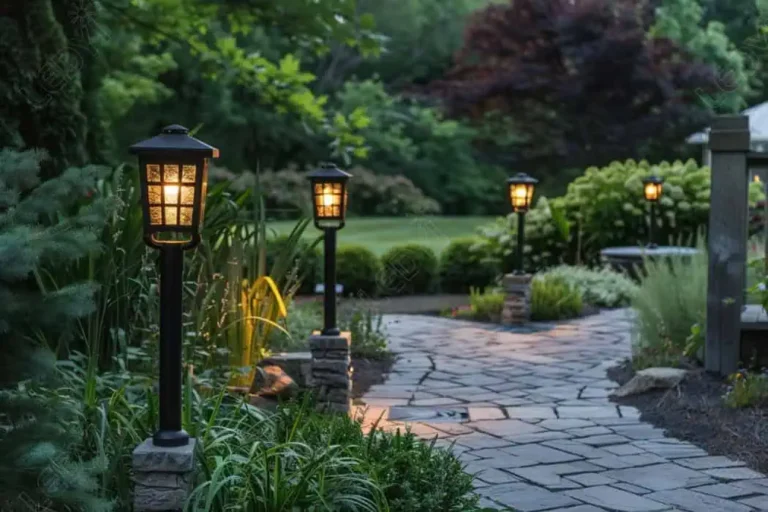Transform Your Space: The Complete Guide to DIY Home Projects
Homeowners across America are rolling up their sleeves and reaching for their toolboxes. DIY home projects have surged in popularity, offering an affordable way to personalize living spaces while building valuable skills. Whether you’re looking to refresh a tired room or tackle major renovations, taking on projects yourself can save thousands of dollars while creating a sense of accomplishment that no store-bought solution can match.
The beauty of DIY projects lies in their flexibility. You control the timeline, choose materials that fit your budget, and create something uniquely yours. From simple weekend tasks to multi-month renovations, every project teaches new skills and adds value to your home. The key is starting with realistic expectations and the right approach.
This comprehensive guide will walk you through everything needed to succeed with DIY home projects, from initial planning to final touches. You’ll discover essential tools, explore project ideas suited to different skill levels, and learn how to avoid common pitfalls that derail even well-intentioned efforts.
Planning Your DIY Project
Success starts with honest self-assessment. Consider your current skill level, available time, and physical capabilities. A beginner shouldn’t jump into complex electrical work, but painting rooms or installing floating shelves are perfectly manageable first projects.
Start by researching your chosen project thoroughly. Watch tutorial videos, read step-by-step guides, and understand each phase of the work. Create a detailed list of required materials and tools, then add 10-15% extra for unexpected needs or mistakes.
Setting a realistic budget prevents costly surprises. Research material costs at multiple suppliers, factor in tool purchases or rentals, and include a contingency fund for unforeseen expenses. Remember that quality materials often cost more upfront but provide better long-term results.
Timeline planning is equally crucial. Most DIY projects take longer than anticipated, especially for beginners. Break large projects into smaller phases and allow flexibility for learning curves or weather delays. Consider how the project will impact daily routines and plan accordingly.
Essential Tools and Materials
Building a solid tool collection is a worthwhile investment that pays dividends across multiple projects. Start with basics: a quality drill with bits, adjustable wrench set, screwdrivers, measuring tape, level, and safety equipment including goggles and work gloves.
For cutting tasks, invest in a circular saw for lumber and a utility knife for various materials. A stud finder helps locate wall supports, while a socket set handles bolt and nut work. These tools handle 80% of common DIY tasks.
When sourcing materials, balance cost with quality. Hardware stores often provide knowledgeable advice and accept returns easily, making them ideal for beginners. Big-box retailers offer competitive pricing on bulk purchases. Online suppliers can be cost-effective for specialty items but require careful measurement verification.
Don’t overlook used tool options. Estate sales, pawn shops, and online marketplaces often have quality tools at significant discounts. Just inspect carefully for wear, damage, or missing parts before purchasing.
DIY Project Ideas for Beginners
Painting remains the most accessible home improvement project. It delivers dramatic visual impact with minimal skill requirements. Start with smaller rooms to build confidence, and invest in quality brushes and rollers for professional-looking results.
Wall decoration projects like hanging artwork or installing peel-and-stick wallpaper require basic measuring and leveling skills. These projects teach fundamental techniques while making immediate visual improvements.
Simple furniture upgrades offer excellent skill-building opportunities. Sanding and refinishing wooden pieces, reupholstering chairs, or adding new hardware to cabinets are manageable projects that yield impressive results. Start with less visible pieces to practice techniques before tackling prominent furniture.
Organizing solutions like installing closet systems or building simple storage boxes combine functionality with skill development. These projects teach measuring, cutting, and assembly techniques that apply to more complex future projects.
Intermediate DIY Projects
Building custom shelving or storage units requires more precision but remains achievable for motivated DIYers. Start with simple designs using standard lumber dimensions to minimize cutting requirements. Focus on square, level construction for professional appearance.
Basic plumbing fixes like replacing faucets, installing new toilet seats, or fixing running toilets save significant money while building confidence. Always shut off water supplies before starting and have towels ready for minor spills.
Simple electrical projects like replacing outlets, switches, or light fixtures are manageable with proper safety precautions. Always turn off circuit breakers before working and test wires with a voltage detector to ensure power is off. When in doubt, consult a professional electrician.
Tile work for backsplashes or bathroom accents requires patience and attention to detail. Start with simple subway tile patterns before attempting complex designs. Invest in proper tile cutting tools and take time to ensure straight, even lines.
Advanced DIY Projects
Kitchen renovations offer substantial home value increases but require careful planning and multiple skill sets. Consider tackling projects in phases: painting cabinets first, then countertops, followed by backsplashes. This approach spreads costs and prevents overwhelming complexity.
Bathroom updates combine plumbing, electrical, and finish work. Focus on one element at a time, such as vanity replacement or shower updates. Proper waterproofing is critical in bathroom projects, so research techniques thoroughly.
Landscaping and outdoor projects can transform property curb appeal. Building decks, installing patios, or creating garden beds require physical effort but offer rewarding results. Consider local climate conditions and maintenance requirements when selecting materials and plants.
Flooring installation has become more DIY-friendly with click-together systems. Hardwood, laminate, and luxury vinyl options offer professional appearance without complex installation requirements. Proper subfloor preparation is crucial for long-lasting results.
Safety Tips for DIY Projects
Personal protective equipment should never be optional. Safety glasses protect against flying debris, work gloves prevent cuts and splinters, and dust masks guard respiratory health during sanding or demolition work.
Read all tool manuals before use and follow manufacturer safety guidelines. Keep cutting tools sharp – dull blades require more pressure and increase accident risk. Maintain clean, organized work areas to prevent trips and falls.
Understand your home’s electrical and plumbing systems before attempting related projects. Know circuit breaker locations and water shut-off valves. When working at height, use proper ladders rated for your weight plus materials.
Never rush safety-critical steps like measuring twice before cutting or ensuring power is off before electrical work. Taking extra time for safety precautions prevents injuries and costly mistakes.
Troubleshooting Common DIY Problems
Mistakes happen even to experienced DIYers. Uneven cuts can often be fixed with sanding or trim pieces. Paint drips can be sanded smooth and repainted. Measure twice, cut once remains excellent advice, but recoverable errors shouldn’t derail projects.
When problems exceed your skill level, seeking professional help prevents small issues from becoming major disasters. Licensed electricians, plumbers, or contractors can often fix DIY mistakes more cost-effectively than complete project restarts.
Keep detailed photos of work progress, especially before covering walls or connections. These images prove invaluable when troubleshooting problems or making future modifications.
Learn to recognize when perfectionist tendencies become counterproductive. Most DIY projects don’t require museum-quality finishes – functional and attractive results should be the goal.
Frequently Asked Questions
How much money can I save with DIY projects?
DIY projects typically save 50-70% compared to professional installation costs. However, factor in your time value and learning curve. Simple projects like painting offer the highest savings percentage, while complex renovations may save less due to tool investments and potential mistakes.
What projects should beginners avoid?
Avoid major electrical work requiring permits, structural modifications, plumbing requiring new lines, and roofing projects. These require specialized skills and mistakes can be dangerous or costly. Start with cosmetic improvements and work toward more complex projects as skills develop.
How do I know if I need permits for my project?
Contact your local building department for permit requirements. Generally, cosmetic work like painting or flooring doesn’t require permits, while electrical, plumbing, or structural changes often do. Permits protect safety and ensure proper inspections.
What’s the best way to learn DIY skills?
Combine online tutorials with hands-on practice. YouTube offers countless instructional videos, while local hardware stores often provide workshops. Start with simple projects and gradually increase complexity. Don’t hesitate to ask experienced friends or family for guidance.
How do I handle projects that go wrong?
Stay calm and assess the situation objectively. Many problems have simple solutions once emotions settle. Research fixes online, consult hardware store experts, or call professionals if needed. Document mistakes to avoid repeating them in future projects.
Start Building Your Dream Home Today
DIY home projects offer an unbeatable combination of cost savings, skill development, and personal satisfaction. Every successfully completed project builds confidence for the next challenge while creating a home that truly reflects your personality and preferences.
Begin with projects matching your current skill level and gradually tackle more complex challenges as experience grows. Remember that professional-level results come with practice – your first attempts don’t need to be perfect, just functional and safe.
The tools and skills learned through DIY projects provide lifelong value, enabling ongoing home maintenance and improvements. Start planning your first project today and discover the satisfaction of transforming your living space with your own two hands.






